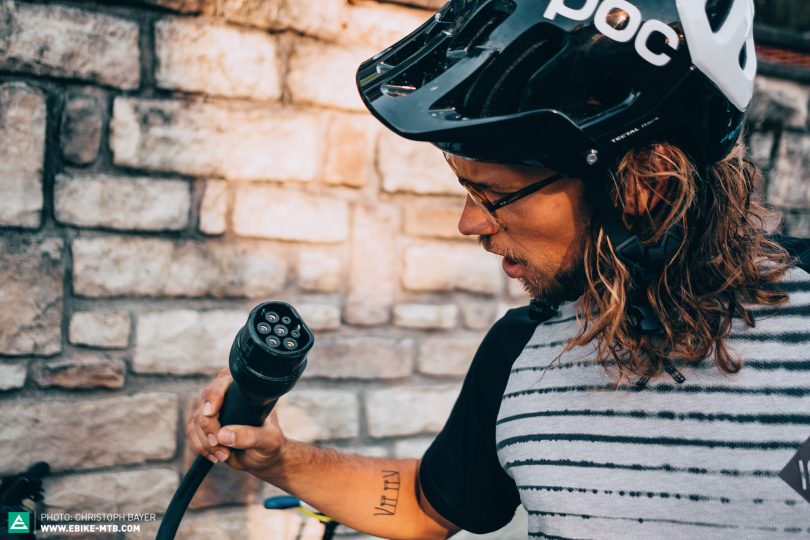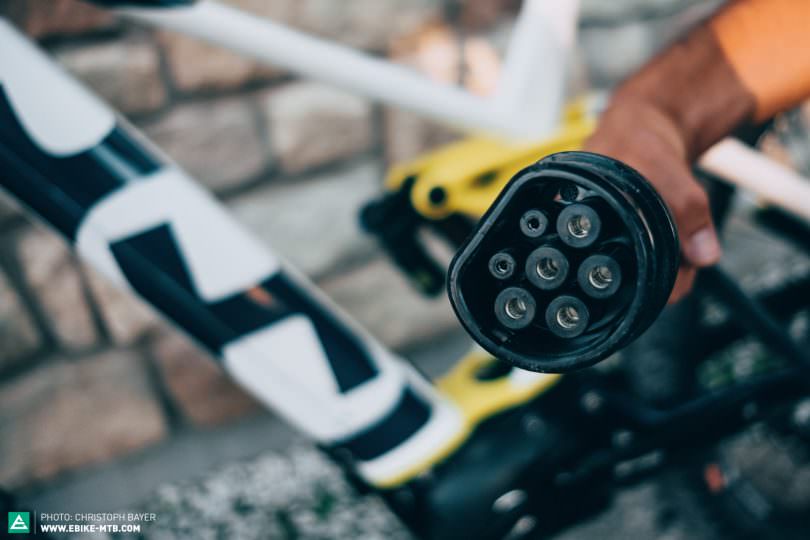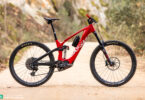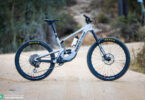Supercharger – When will we finally see proper eMTB quick chargers?
Whether it’s an electric car or a smartphone, fast charging is on everyone’s lips and is regarded as the key to the success of e-mobility. Unfortunately, there are still big differences in the charging times of eMTBs. Here is an overview of the status quo and what the future could hold.

Using a proprietary supercharger, you can charge a Tesla to 80 % capacity in about 40 minutes. Porsche’s first e-sports car, the Taycan will be on the market at the end of 2019 and promises to achieve the same in an incredible 15 minutes. At the moment, eMTBers can only dream of those kinds of charging speeds, if only because of the significant costs of the technology involved, which quickly reach six-figure numbers for a single charging station. But there are fast eMTB chargers on the market. Though they’re not yet able to keep up with the performance of Tesla and Porsche, they at least offer significantly quicker charging times than standard chargers that usually ship with the bikes.

There’s always a compromise
At first glance, more powerful chargers come with hardly any disadvantages, but in practice, there is a fundamental problem: as the performance goes up, so, in general, does the weight. A quick charger would be particularly useful when you’re out riding, but compact chargers are simply too slow to sufficiently charge the battery during a short lunch break. However, a fast charger is significantly heavier and will take up a lot more space in your backpack. Industry leader Bosch currently offers three chargers that do a great job of illustrating the relationship between charging time, weight and size.
Charging times Bosch eBike Systems (500 Wh battery)
| Charger | Charging current | Charging time 0-100% | Charging time 0-50 % | Size | Weight |
|---|---|---|---|---|---|
| Compact Charger | 2 A | 7.5 h | 3.5 h | 160 x 75 x 45 mm | Approx. 600 g |
| Standard Charger | 4 A | 4.5 h | 2 h | 190 x 86 x 54 mm | Approx. 800 g |
| Fast Charger | 6 A | 3 h | 1.2 h | 200 x 90 x 60 mm | Approx. 1,000 g |
Towards the end, charging speed decreases
We advise being aware of some key points with regards to the information manufacturers provide on partial charging. Batteries charge logarithmically i.e. the battery charges faster at the beginning and slows down towards the end of the charging cycle. From approx. 80% capacity, the charge current is reduced in order to protect the cells. For example, Bosch states: “to charge the battery to 50 % capacity, the fast charger will take a little more than an hour.” If from that you assume that it’ll take 2 hours for a full charge, you’ll be disappointed, since it will actually take a good 3 hours. As a rule of thumb, you can assume that at capacity between 80% and 100% the battery will only charge with half the current, or half as fast.

Haibike FLYON bikes set the benchmark
Haibike has set the current benchmark with their new FLYON bikes, the fast chargers of which are pushing out the envelope. Their 10 A charger was developed in cooperation with BMZ and charges the 630 Wh battery to 80% in just 60 minutes and takes just 1.5 hours to charge from 0 to 100%. That amount of power also has its drawbacks, with the charger weighing a little under 2.3 kg (more than twice as much as Bosch’s fast charger) and because of the requirement for an active cooling system it’s not splash-proof. The smaller 4 A charger, on the other hand, weighs only 810 g, but at 3.8 hours it takes more than twice as long to fully charge the battery.
Loading times Haibike FLYON (630 Wh)
| Charger | Charging time 20-80% | Charging time 20-100% | Charging time 0-80% | Charging time 0-100% | Size | Weight |
|---|---|---|---|---|---|---|
| 4 A charger | 1.8 h | 3.1 h | 2.5 h | 3.8 h | 210 x 100 x 60 mm | 810 g |
| 10 A charger | 0.8 h | 1.3 h | 1.0 h | 1.5 h | 230 x 160 x 70 mm | 2,275 g |
The 10 A charger is a so-called smart charger as it communicates with the battery via a CAN bus before charging, limiting the current to a level that the battery can withstand. The batteries internal electronics are supplied by TQ-Systems and are designed to meet the high performance standards of their TQ HPR 120S motor. Supposedly the battery doesn’t age prematurely due to rapid charging either. The cells are specifically designed to withstand higher currents, meaning that even at 10 A they’re under no strain.
The central problem: quick chargers are large and heavy and are therefore hardly portable.
Would actively cooling the battery make sense?
The chargers and the batteries of a lot of power tools are actively cooled while charging. But according to TQ-Systems, cooling hardly offers any advantages for the FLYON system. They say that the battery is thermally very stable, having plenty of reserves even without being cooled, both while charging and discharging. However, the fact that such a system is not yet available for ebike batteries is probably also due to the limitations of weather protection, seeing as a ventilated battery would need additional weather-proofing.

A question of infrastructure
Haibike’s new quick charger has proven what’s possible with the technology we have, being the first manufacturer to offer a charger that can almost completely charge the battery in the time it takes to finish a typical lunch break. However, there is an obvious problem: because of its 2.3 kg weight, most riders will be reluctant to carry the charger in their backpacks. The solution could be a network of public charging stations operated by restaurant owners and hotels, but the development of such an infrastructure is still in its infancy. Due not only to the costs but also because the batteries and motors of different manufacturers are not inter-compatible – a common charging standard would make everything a whole lot easier.
Conclusion
Quicker charging times offer lots of advantages in day-to-day life, increasing the range of ebikes, and making them more user-friendly and flexible. However, the currently available fast chargers are suffering an identity crisis: they’re too big to take along on a ride and they’re usually superfluous at home. What we really need is an improved infrastructure of public charging stations. However, high-performance charging technology such as you’ll find in the automotive industry is extremely expensive, and we’ll unlikely see a technological leap in the next few years – for the time being, the ebike supercharger dream will, therefore, remain just that.
This article is from E-MOUNTAINBIKE issue #016
E-MOUNTAINBIKE Magazine is published in a digital app format in both English and German. Download the app for iOS or Android to read all articles on your tablet or smartphone. 100% free!

Did you enjoy this article? If so, we would be stoked if you decide to support us with a monthly contribution. By becoming a supporter of E-MOUNTAINBIKE, you will help secure a sustainable future for high-quality cycling journalism. Click here to learn more.
Words: Photos: Christoph Bayer










